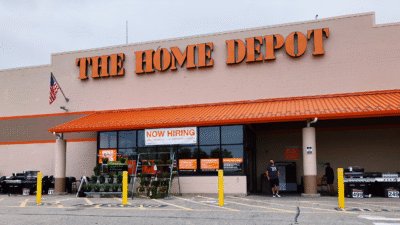
Sign up for smart news, insights, and analysis on the biggest financial stories of the day.
Consumers just scored a valuable ally in the fight against inflation: Walmart.
As inflation continues to eat into consumer discretionary spending, the big-box king — long a formidable price negotiator — is going to war with suppliers over price increases, according to a new report from Bloomberg. It’s Walmart’s take on monetary policy.
Go to the Mattresses (Section)
Inflation makes you do crazy things. Especially if you’re a consumer goods producer. According to first-quarter earnings results, major consumer-goods multinationals such as PepsiCo, Coca-Cola, Unilever, Proctor & Gamble, and Mondalez — you know, the ones who fill Walmart’s shelves — have enjoyed bumper revenues by increasing prices by 10% or more, even if it means selling fewer units. It’s what former Fed vice chair Lael Brainard called a “price-price spiral”, what UBS Global Wealth Management chief economist Paul Donovan termed “profit margin-led inflation”, and what the more handlebar mustache-stroking, Jacobin-reading population dubbed “greedflation.”
But what’s good for Mondalez and PepsiCo isn’t so good for Walmart. As Bloomberg points out, the retail giant makes its bones on higher-margin discretionary spending products, like PlayStations and air-fryers, which are unsurprisingly being slashed out of kitchen-table budgets battered by inflation. It’s the catalyst for its new hard-driving tactics:
- Despite posting a nearly 8% year-over-year increase in consolidated revenue in its most recent earnings report — a very high watermark among industry peers — Walmart’s gross margin still fell 18 basis points due to “ongoing pressure from category sales mix globally,” CFO John David Rainey told analysts in a call last week.
- Walmart is “working with those suppliers that are on the prepared foods and consumable categories to get costs down more as fast as we possibly can would help them drive unit volume,” CEO Doug McMillon said in the earnings call, with the aim to “free up cash for customers to use for discretionary goods.”
Too Big to Flail: While other big-box retailers like Kohl’s, Best Buy, and Dick’s Sporting Goods have struggled to wield their pricing power against suppliers’ prices-vs-volume profit-margin-led inflation tradeoff, Walmart is another beast entirely. The company’s $600 billion in annual revenue makes it twice the size of Target and Costco combined, Bloomberg noted, giving it nearly unparalleled sway. Only one question remains: Can you lend a hand, Jeff Bezos?











